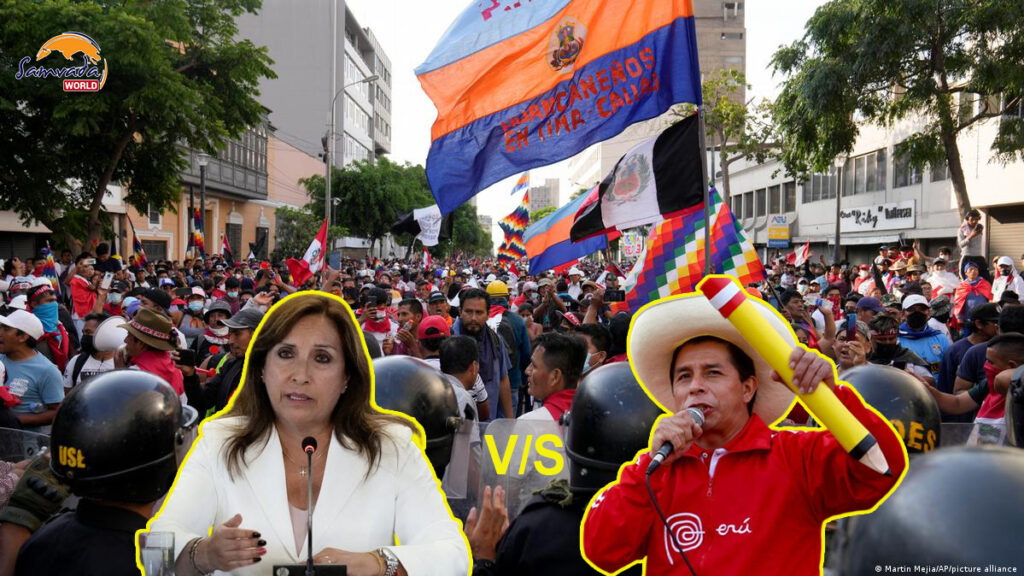
The trigger for the large-scale anti-government protests was the events of Dec. 7, 2022, that saw now-ousted President Pedro Castillo embark on what has been described as an attempted coup. Whether it was a “coup” is subject to debate. Castillo’s supporters say he was trying to head off a different type of coup, one instigated by Congress. Castillo – a leftist, Indigenous former teacher from the country’s south – tried to shut down a Congress intent on impeaching him over corruption claims and accusations of treason. He called on the military to support him, and his intention was to form a constituent assembly to reform the country’s constitution.
However, his plan didn’t work. The military countered Castillo’s ploy while the Congress refused to be dissolved and went ahead with its impeachment vote, removing him from power. The events of that day set off the protests that have built momentum over the subsequent weeks. But while the events of Dec. 7 were the immediate trigger, it is important to understand that this crisis was long in the making.
Roots of the Political Crisis and Polarisation
The crisis is rooted in the nature of Peru’s political system. In part by the design of the country’s constitution which was adopted in 1993 but amended a dozen times since, creating ambiguity as to who has the greater power – the president or Congress. Constitutionally, Congress is given enormous scope to limit executive power, including removal through impeachment. The idea was to serve as a bulwark against the excesses of authoritarian-minded presidents. But in reality, it encourages instability and a weak executive. The constitution is so ambiguously written that it also gives wiggle room for presidents who want to shut down Congress, as Castillo unsuccessfully tried to do.
Meanwhile, Peru has seen a dismantling of its old, established political party system. Once-powerful parties no longer exist or struggle to get support. As a result, the country’s party system has fractured – more than a dozen parties are represented in Congress, which makes it hard for any one leader or party to achieve a majority. In short, it makes it hard to govern when you have no legislative base to do so. For example, Castillo had the support of only 15 members of his own party in the 130-seat assembly.
The country is deeply polarized and divided along a number of different lines: ethnic, racial, economic and as the protests have fully shown regionally. Castillo supporters have led the protests though he had no real power base in the country’s capital, Lima. However, Castillo as the first real rural president of the country had significant support in the south. The protests have been concentrated around the city of Puno, but support has come from the whole high Andes of southern Peru.
Overwhelming Challenges for Boluarte
President Dina Boluarte claimed that the protests had “no social agenda” but rather sought to “break the rule of law, generate chaos and disorder and seize power”. She added that attacks on three regional airports had been planned in advance and would be punished with “all the rigour of the law”.
“To the Peruvian people, to those who want to work in peace and to those who generate acts of protest I say: I will not get tired of calling them to a good dialogue, to tell them that we work for the country,” she said. One person died and about 10 were injured in clashes with police in the southern city of Arequipa on Thursday, according to Peru’s ombudsman’s office, when protesters reportedly tried to invade the airport. Several airports have been closed and huge swathes of the country have been paralysed by more than 120 roadblocks.
The area is predominantly Quechua and Aymara – the two major Indigenous groups in the Peruvian south. Peruvian Quechua and Aymara are “first cousins” to the same groups over the border in Bolivia. And this is important in the context of the current protests. Evo Morales, the former president of Bolivia, has long talked about “Runasur” – the concept of uniting Indigenous people across the Andes region. Morales has been blamed by the Peruvian government for stirring up the protests – indeed he has now been banned from entering Peru. No doubt, Bolivian allies have been in Peru’s south mobilizing the movement, and some have been arrested.
With the economy of Peru not doing well, domestic protest further adds complexity to the Peruvian political landscape. It would be challenging for Boluarte and needs to be seen how she handles the country during the early days of her reign.
(The author is a Post Graduate student in International Relations at Amity University, Raipur. She writes articles and research papers regularly on international affairs and geopolitics)
